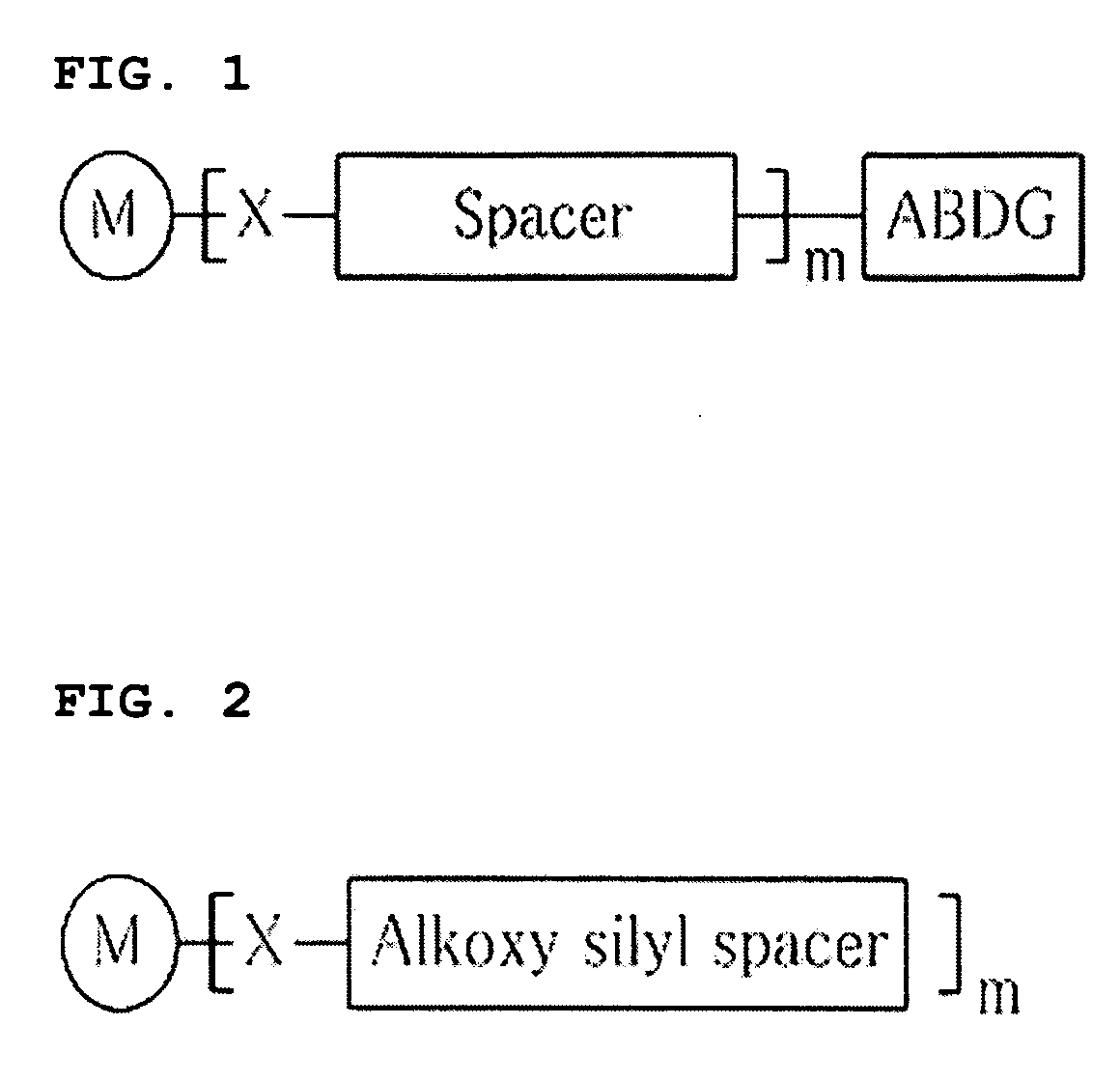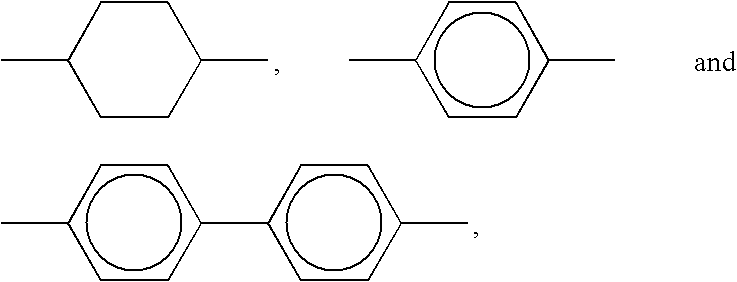Novel metal nanoparticle and formation of conductive pattern using the same
a metal nanoparticle and conductive pattern technology, applied in the field of new metal nanoparticles and a method for forming a conductive pattern using the same, can solve the problems of difficult control and arrangement of microparticles uniformly, difficulty in the regulation of space regularity or molecular orientation, unstability, etc., and achieve the effect of easy to achieve the arrangement of nanoparticles
- Summary
- Abstract
- Description
- Claims
- Application Information
AI Technical Summary
Benefits of technology
Problems solved by technology
Method used
Image
Examples
example 1
Introduction of an Acid-Degradable Group into the Surface of a Gold Nanoparticle
[0097]After 0.2 g of the gold nanoparticle obtained in Preparative Example 1 was mixed with 50 M of a mixture of concentrated sulfuric acid and 30% hydrogen peroxide (1:1), the mixture was gently stirred for 20 minutes, diluted with 250 M of distilled water, and was filtered with a 0.2 μm filter. The filtered residue obtained as described above was washed with 50 M of methanol five times and dried in a 160° C. oven for 5 hours. Then, 0.1 g of the dried gold nanoparticle was added to 200 M of toluene together with 1.3 g of 4-cyanophenol and was stirred for 72 hours. The product generated above was filtered with a 0.2 μm filter, was washed with THF twice, and was dried in a 30° C. oven under reduced pressure. After 0.02 g of the resulting product was added to 2 M of fresh toluene, the mixture was subjected to ultrasonication for 10 minutes, was added with 0.40 M of triethylamine and 0.22 M of triethylaceth...
example 2
Introduction of an Acid-Degradable Group into the Surface of a Silver Nanoparticle
[0098]The silver nanoparticle having an acid-degradable group introduced into the surface thereof was obtained according to the same method as described in Example 1 except that 0.2 g of the silver nanoparticle prepared in Preparative Example 2 was employed instead of the gold nanoparticle.
example 3
Introduction of an Acid-Degradable Group into the Surface of a Copper Nanoparticle
[0099]The copper nanoparticle having an acid-degradable group introduced into the surface thereof was obtained according to the same method as described in Example 1 except that 0.2 g of the copper nanoparticle prepared in Preparative Example 3 was employed instead of the gold nanoparticle.
PUM
| Property | Measurement | Unit |
|---|---|---|
| Percent by mass | aaaaa | aaaaa |
| Percent by mass | aaaaa | aaaaa |
| Percent by mass | aaaaa | aaaaa |
Abstract
Description
Claims
Application Information
 Login to View More
Login to View More - R&D
- Intellectual Property
- Life Sciences
- Materials
- Tech Scout
- Unparalleled Data Quality
- Higher Quality Content
- 60% Fewer Hallucinations
Browse by: Latest US Patents, China's latest patents, Technical Efficacy Thesaurus, Application Domain, Technology Topic, Popular Technical Reports.
© 2025 PatSnap. All rights reserved.Legal|Privacy policy|Modern Slavery Act Transparency Statement|Sitemap|About US| Contact US: help@patsnap.com



